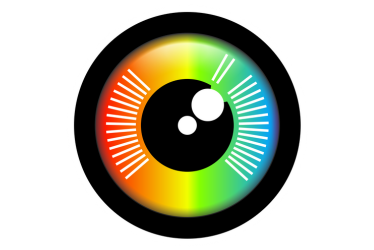Advertisements
Losing photos can be a frustrating experience, especially when it comes to important memories.
Whether due to a deletion error, a device failure, or even a memory problem, deleted photos are not always unrecoverable.
Not all is lost! In this article, we explain how you can recover deleted photos easily, quickly and stress-free.
Discover how to recover all your memories without stress
Recovering deleted photos is easier than it seems.
Today, there are several free tools and applications that allow you to restore your images in just a few steps.
Advertisements
Here we tell you how to do it, with the best options available so you don't lose your most precious memories.
1. Check your "Recently Deleted" folder
One of the first places you should go when you realize you've deleted a photo by mistake is your photos folder. "Recently Deleted".
Most devices have this option, making it easy to recover images that have only been temporarily deleted.
- AndroidOn Android, the gallery usually has a folder called "Recently Deleted" where photos deleted in the last 30 days are stored. Simply open the gallery and look for this option to restore the photos.
- iPhoneiOS users also have a similar feature. In the Photos app on your iPhone, go to the "Recently Deleted" folder. There you can see all the photos deleted in the last 30 days and easily restore them.
This is the quickest and easiest way to recover deleted photos. If you find them in this folder, your problem is solved!
2. Use apps to recover deleted photos
If the photos aren't in the recently deleted folder, don't worry. There are several apps specialized in recovering deleted photos.
Below are some of the most popular and effective ones:
- DiskDiggerThis app is free for Android and allows you to scan both your device's internal memory and SD card. It's ideal for easily recovering deleted photos.
- Dr. Fone: Available for iOS and Android, Dr. Fone It's a very comprehensive application that not only recovers photos, but also messages, videos, and other deleted files. It has a free version that lets you try the recovery process before paying for premium features.
- EaseUS MobiSaverThis tool has a free version for Android and iOS that allows you to recover photos, contacts, and other files. It scans your device to find deleted photos and restore them quickly.
These apps are easy to use; just follow the steps and you'll be able to restore your deleted photos in no time.
3. Recover photos from the cloud
If you use cloud services like Google Photos, iCloud either OneDrive, there's a good chance your photos are already backed up there.
Many devices automatically back up your photos, making it easy to recover deleted photos. Here's how:
- Google Photos: If you have sync enabled in Google Photos, your photos are automatically saved to the cloud. If you deleted them, you can go to the bin from Google Photos and restore them. Deleted photos are kept in the trash for 30 days before being permanently deleted.
- iCloud: For iPhone users, deleted photos are also stored in the trash. iCloud. You just have to access iCloud.com or the Photos app and look in the section Recently deleted photos to restore them.
4. Recovering from a backup
If you regularly back up your device, you can restore a backup that contains deleted photos.
So much Google Drive (on Android) as iCloud (on iOS) offer the ability to securely store your photos.
- AndroidIf you have a backup on Google Drive, you can restore it directly from your phone's settings. Make sure the backup is up to date and contains the photos you lost.
- iPhoneIf you back up to iTunes or iCloud, you can restore deleted photos by restoring a previous backup. Keep in mind that this will restore all data on your device, not just the photos.
5. Use a PC to scan and recover photos
If you prefer to use your computer to recover deleted photos, you can connect your phone to the PC and use programs like Recuva either Disk Drill to perform a full scan of the device.
- RecuvaThis free PC program is excellent for recovering deleted photos from SD cards or Android devices. Simply connect your device to your PC and perform a deep scan to find deleted files.
- Disk DrillThis software also has a free version that allows you to recover deleted photos and other files from your devices. You can use it on Windows or Mac.

Recuva
6. Recover photos from an external SD card
If your photos were stored on an external SD card, the process is simple.
You just need one SD card reader to connect it to your PC and use programs like Recuva either PhotoRec to scan the card and recover deleted photos.
- PhotoRecThis is a free, open-source tool that can help you recover photos from SD cards and other storage devices. It's effective, but its interface can be a bit more technical than other options.

PhotoRec
7. Tips to prevent photo loss in the future
Prevention is always the best solution. Here are some key tips to avoid losing photos in the future:
- Make automatic backups: Turn on automatic backup in Google Photos or iCloud to make sure all your photos are backed up without having to do it manually.
- Use additional storageIn addition to the cloud, save your photos to external hard drives or high-quality SD cards. This gives you an extra layer of protection.
- Organize your galleryKeep your photos organized in folders and review them before deleting any files. If you're unsure, archive them before deleting.
- Update your device regularly: Software updates not only improve your device's performance, but they can also prevent bugs and glitches that could lead to photo loss.
8. What to do if recovery tools don't work?
Sometimes, despite using the suggested applications and methods, you can't recover your deleted photos.
If this happens, don't despair. Here are some options you might consider:
1. Contact a professional data recovery service
If the photos are really important and you cannot recover them using conventional methods, you can resort to a professional data recovery service.
These companies specialize in recovering data from damaged, corrupted, or inaccessible devices.
Although these services can be expensive, they typically have high success rates and may be the only option for recovering irretrievably lost photos.
2. Check all your backup options
You may have forgotten that you had backups somewhere.
If you use services like Google Drive, Dropbox, OneDrive, or even local backups on your computer, review these backups.
Your photos may already be stored on one of these services, allowing you to restore them without having to resort to other methods.
3. Accept the loss of photos
In some cases, despite all attempts, the photos may no longer be recoverable.
If you're still unable to restore them after trying various tools and methods, it may be time to accept that those images are lost.
However, it is an important lesson about the importance of maintaining regular backups so that this doesn't happen again in the future.
9. Prevention: How to avoid losing photos in the future
Although recovery tools are effective, it's best to prevent photo loss in the first place.
Here are some key tips to protect your memories and ensure you never lose your important photos again:
1. Make automatic backups
The safest option is to enable automatic backups to cloud storage services like Google Photos, iCloud either OneDrive.
This ensures that all your photos are automatically uploaded to the cloud, where they'll be backed up and can be recovered if lost.
Plus, these platforms often have unlimited storage options or enough space for all your photos.
2. Use additional physical storage
Although the cloud is an excellent option, it is also advisable to have a physical storage such as external hard drives or USB flash drives.
You can make regular backups on these devices, giving you extra protection in case you have issues with your phone or cloud connection.
3. Organize your gallery regularly
Keep your photo gallery organized and free of duplicate or unnecessary files. When deleting photos, make sure they're not important images before doing so.
If you have any questions, file them in a specific folder or make a backup copy before deleting them.
4. Avoid overwriting data on your device
One of the keys to recovering deleted photos is to stop using the device immediately after the loss.
If you continue taking photos or downloading new files, you risk overwriting deleted data.
Therefore, when you notice that you have lost important photos, it is best to avoid using the device until you attempt recovery.
5. Use high-quality SD cards
If you use SD cards to store your photos, make sure they are of good quality and from reputable brands.
Low-quality cards can easily become corrupted, which can lead to data loss.
Also, make frequent backups of the photos stored on the card.
10. Common mistakes when trying to recover photos
Recovering deleted photos isn't always a simple process, and there are some common mistakes that can make things difficult. Here are some of the most common ones so you can avoid them:
1. Overwrite the data
When you delete a photo from your device, the data doesn't disappear immediately. It remains marked as "free space" and can be overwritten by new files if you continue using the device.
Therefore, it is crucial to avoid taking new photos or downloading new files after losing important photos.
Acting quickly can improve your chances of recovery.
2. Using untrusted applications
Not all recovery apps are created equal. Some may be ineffective or even install malware on your device.
Make sure you use apps with good reviews and that come from trusted sources, such as DiskDigger, Dr. Fone either EaseUS MobiSaver.
3. Not performing a deep scan
When using recovery apps, it's important to opt for a deep scan, as this method looks for deleted files in parts of the device that aren't accessible via a surface scan.
If you don't choose this option, you may not recover all your deleted photos.
4. Not checking backups of other applications
If you use messaging apps like WhatsApp or Facebook, your photos may have been backed up there.
Check out these apps, as many of them also offer cloud storage options.
Even if the photos were deleted from your device, they may still be available in your app account.
11. Recover deleted photos from a damaged device
If your device has physical problems (a broken screen, power issues, etc.), you can still recover your photos. Here's how:
1. Repair the device
If the problem is a broken screen or a faulty charging port, try repairing the device.
If you can turn it on and access the files, you can transfer the photos to another device or use a recovery app to restore them.
2. Use recovery software from a PC
If you can't access your device directly, connect your phone to a PC and use recovery software like Dr. Fone either iMobie PhoneRescue to scan your phone and recover deleted photos.
3. Consult a professional
If your device has more serious damage, such as motherboard issues or water damage, your best option is to take it to a professional data recovery service.
These companies have the tools necessary to recover photos and files from damaged devices.
Don't let your memories be lost!
With these tips and tools, you now know how to recover deleted photos effectively.
From free apps to professional services, there's always a solution to restore your lost photos.
Want more tips on how to protect your photos and memories?
Learn more about how to keep your data safe at all times!